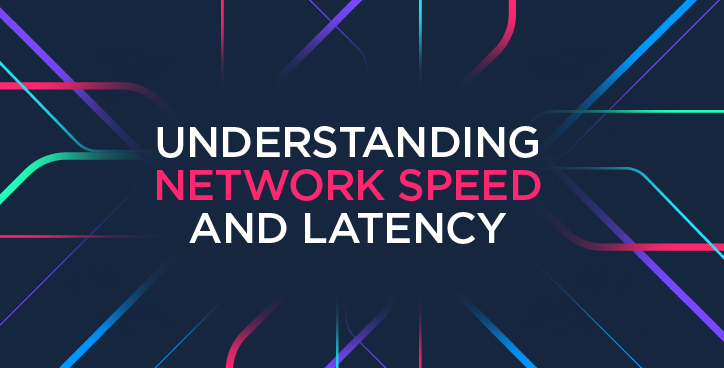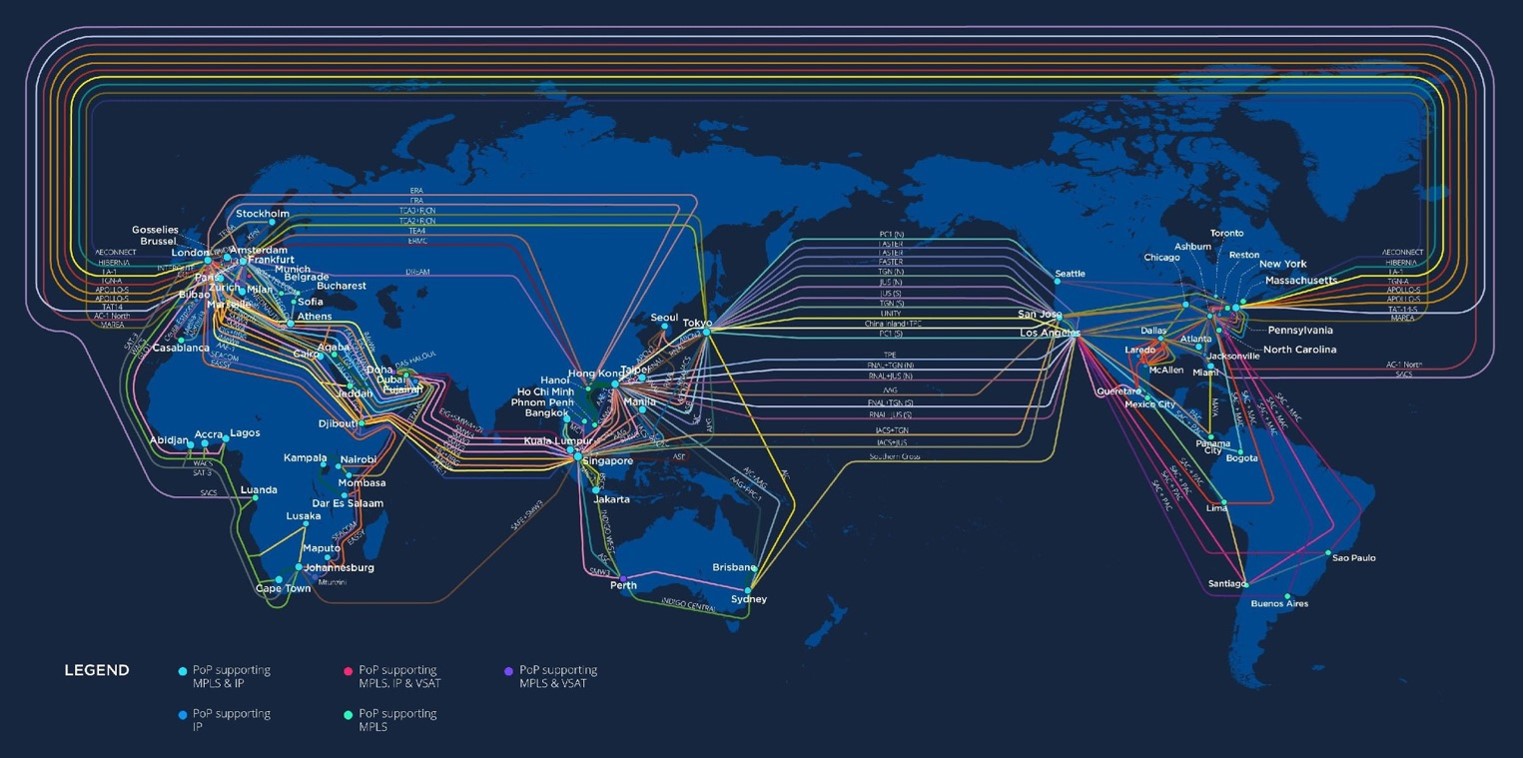Understanding Network Speed And Latency
By Alex Hawkes|28 June, 2021

Businesses are demanding more from their networks than ever before. Be it moving more of your data and applications to the cloud or supporting the needs of an increasingly remote workforce, network performance is becoming more critical for the day-to-day running of a business.
In this blog we look at the role that speed, bandwidth and latency can play in overall network performance, while exploring some of the ways IT managers can deliver a more reliable and consistent network experience...
Speed vs bandwidth vs throughput vs latency
Network performance can be measured in a number of different ways. Even though you may be familiar with some of the below networking terms, they can often be confused with one another:
- Speed: Network speed is measured by the transfer rate of data from source system to destination.
- Bandwidth: This is about the volume of data that can be transferred over a network (i.e. the size of the pipe). The standard measurement for data transfer speed is megabits per second (Mbps).
- Throughput: While bandwidth tells you how much data could theoretically be transferred across the network, throughput indicates how much data was transferred from a source at any given time.
- Latency: This measures the time it takes for data to get to its destination across the network. It is commonly measured as a round trip delay – taking into account the time taken for information to get to its destination and back again. Latency is usually measured in milliseconds (ms).
Why does latency matter?
Considering all the above, it would seem safe to assume that high-bandwidth networks would usually be the fastest – but not when you throw latency into the mix.
Latency can slow down and lower throughput, leading to poor network performance for end users. Some real-time applications are particularly latency sensitive, such as cloud-based telephony systems, video conferencing and other collaboration tools.
Latency can therefore present hidden costs for businesses, particularly with the recent increase in adoption of cloud-based services and tools to support remote workers during the global pandemic.
What factors contribute to latency and cause delay on networks?
- Distance: It sounds obvious but geographical distance can increase latency, as the further a device is away from the servers responding to the request, the longer the round trip delay.
- Number of hops: Each time a packet of information is sent to another source, router, bridge or gateway point, and then pushed forward to the next, it is referred to as a hop. The higher the number of hops the data packet has to pass through, the slower it will take to reach its destination.
- Congestion: This can occur when a network (or part of the network) or a network node is overloaded with data.
- Jitter: This is the variation in latency or time delay between when a signal is transmitted and when it is received over a network. This variation causes disruption in the normal sequence of sending data packets over your network connection.
- Packet sizes: Latency is directly proportional to packet size. So larger packets have higher latencies, which is why, for example, it takes your business longer to send video files or encrypted data.
How can I reduce latency?
Software Defined Interconnection® platforms like Console Connect provide businesses with instant access to low-latency and high-bandwidth connectivity, enabling them to directly interconnect with clouds, data centres and business partners, or easily access a high-performance business internet service.
When it comes to latency, the public internet can’t provide many guarantees, which can make it unsuitable for accessing latency-sensitive applications.
Similarly, building multiple Dedicated Internet Access (DIA) lines, either via SD-WAN or MPLS, can be complex and won’t necessarily provide your business with cloud-friendly or optimised infrastructure.
Console Connect provides a flexible way to access one of the world’s largest fibre networks. The network offers guarantees when it comes to packet delivery, service availability and round-trip delay.

Why our network is different:
- We own it: We own our own network which means we have true control over the service quality without the need to rely on external partners. We can also offer competitive pricing without intermediaries involved.
- Truly global reach: With an extensive and resilient network infrastructure across the Americas, Europe, Africa, the Middle East and Asia-Pacific, PCCW Global’s network meets the international connectivity needs of enterprise and wholesale users in most cities around the world.
- Security and privacy by design: When it comes to mission-critical apps your business should be directly connected. PCCW Global’s private MPLS network isolates traffic from the public internet and delivers the stringent privacy and security requirements required.
- Higher performance: Owning the underlying network means the Console Connect platform can deliver an uncontended service across its fabric, with assured quality of service and the ability to scale and flex high-speed connectivity on-demand.


.jpg)





.jpg)
